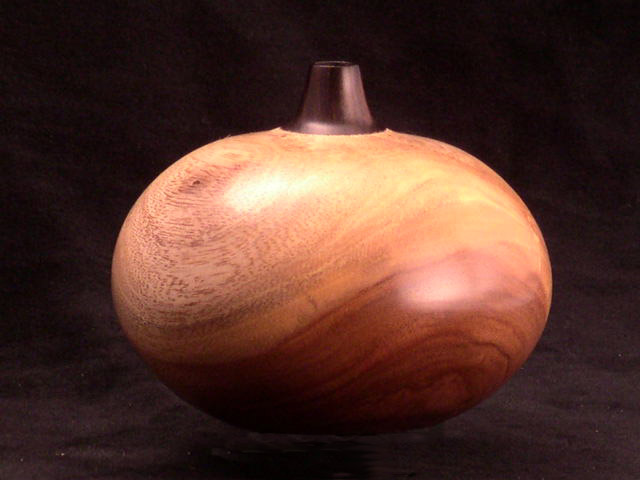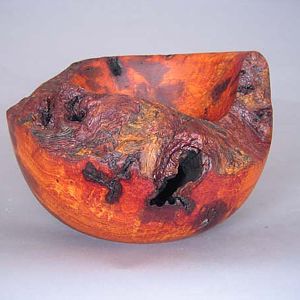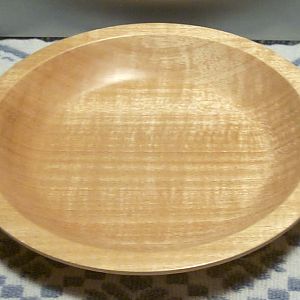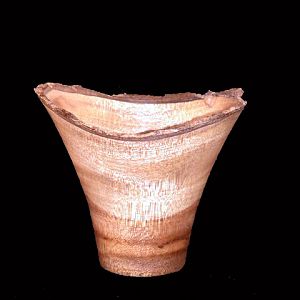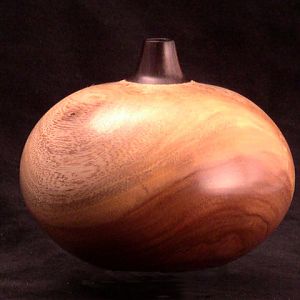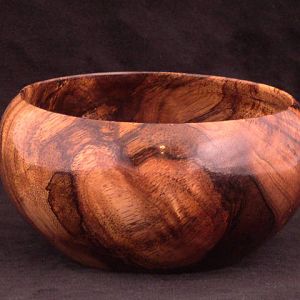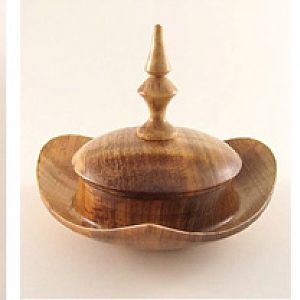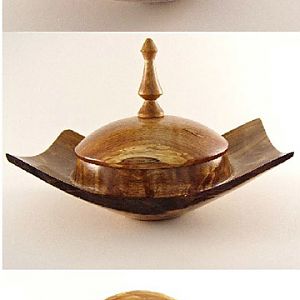This is the second turning I have tried from a piece of a small Kou log given me by a friend. Kou is pretty rare in Hawaii, only growing to 600 feet. Polynesians brought the wood here and used it largely for food utensils and bowls. The colors are subtle and hard to photograph, and unfortunately the shape I chose and the gloss of the finish made it even harder to photograph. Think of Picture Sandstone and you will have an idea what the figure and colrs are like.
Because it is rare I decided to made several smaller pieces from the one log in the hopes that I wouldn't botch them all. This is the second attempt.
I didn't have hollowing tools small enough for this yet so I decided to make a weed pot out of it.
Size is 2.5 x 4". Finish is 2 coats of Shellac only, buffed through to Carnuba.
Again. Thanks to Leroy for the piece of wood.
And as always....lots of comments please! Trying hard to learn and I need bunches of feedback from folks!! Thanks everyone!

